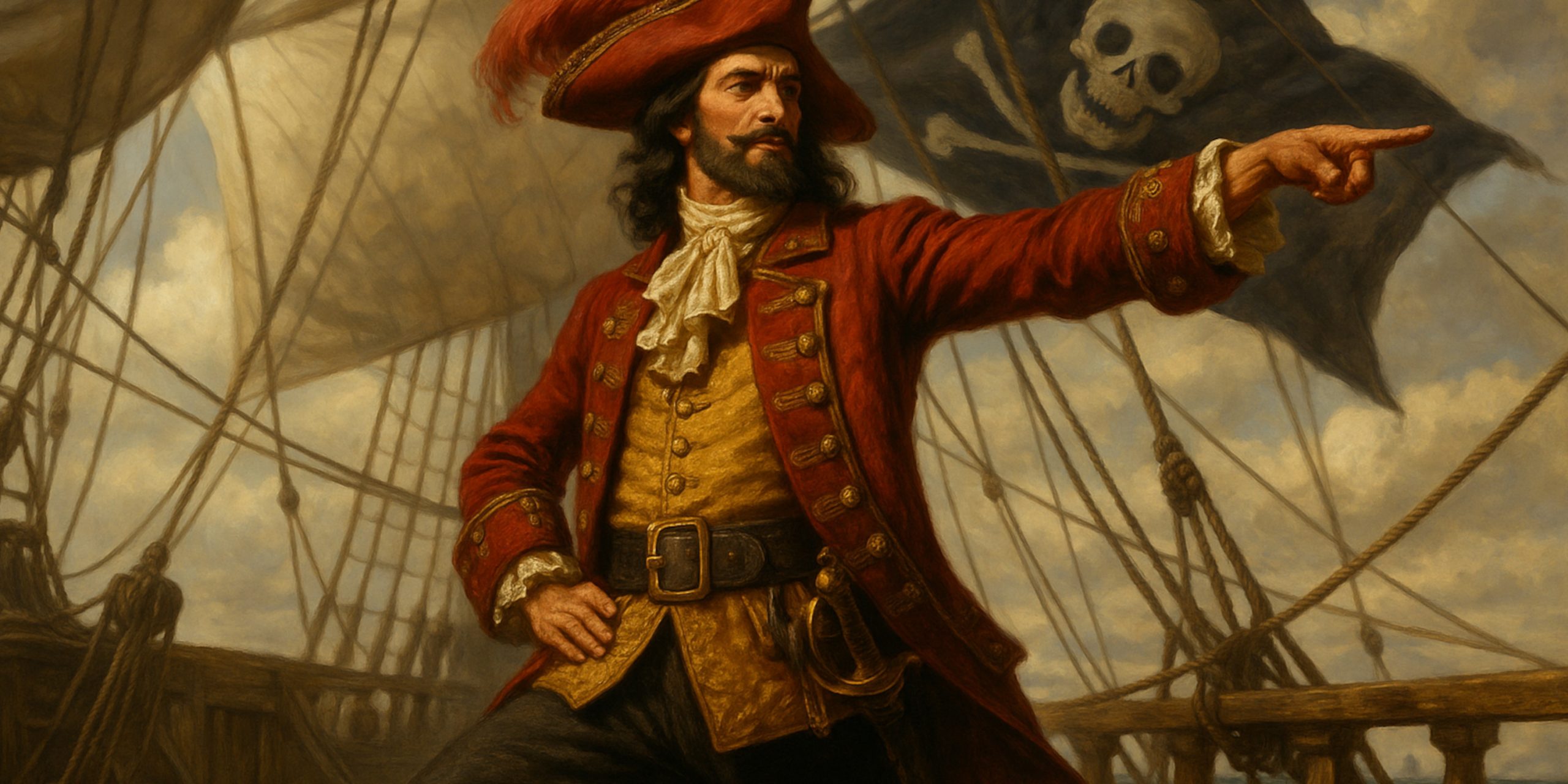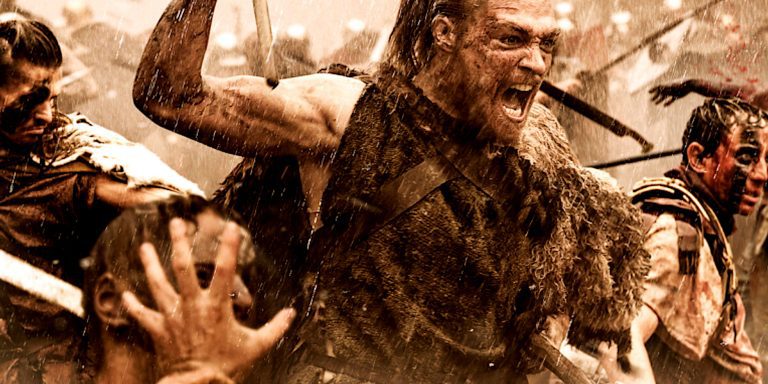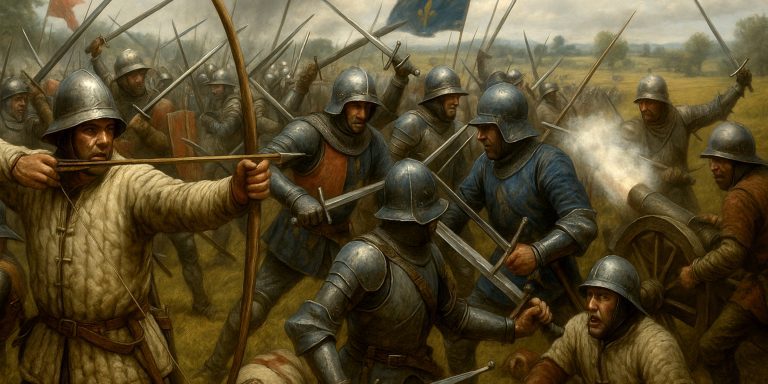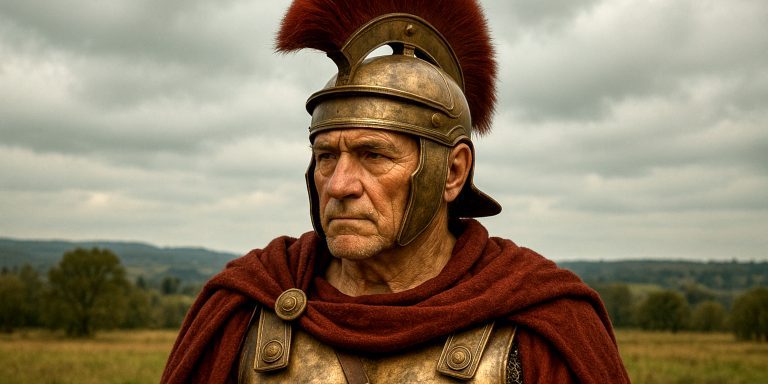
Bartholomew Roberts, better known as Black Bart, was arguably the most successful pirate of the Golden Age of Piracy in terms of ships captured. Operating during the early 18th century, he claimed over 400 vessels and cultivated a fearsome reputation. His strict pirate code, flamboyant appearance, and open defiance of European naval powers made him one of the most notorious figures of the Atlantic world.
Early Life
Bartholomew Roberts was born John Roberts in 1682 in Casnewydd Bach, Pembrokeshire, Wales. Little is known about his early years, but records suggest he went to sea as a teenager, eventually working aboard British merchant and slave ships.
He first appears in the historical record in 1719, serving as second mate aboard the slave ship Princess when it was captured by pirates led by Howell Davis near Anomabu, off the coast of present-day Ghana.
Rise to Captaincy
Roberts initially joined Davis’s crew reluctantly but soon impressed them with his navigational skills and leadership. After Davis was ambushed and killed by Portuguese forces, the crew elected Roberts as their new captain. It was a rapid and unusual rise, particularly for someone who had only recently been pressed into piracy.
One of his earliest acts as captain was a retaliatory raid on the Portuguese island of Príncipe, where Davis had been killed. Roberts led a brutal assault and captured a rich prize: the Portuguese ship Sagrada Familia, laden with gold and other cargo. This early success cemented his leadership and set the tone for his career.
Pirate Code and Leadership
Unlike many pirates, Roberts maintained a strict code of conduct aboard his ships. He was known to abstain from alcohol and expected a degree of discipline from his crew. His articles included rules on curfews, cleanliness, and even music, reflecting his desire to avoid the chaos and disorder often associated with pirate life.
Contemporary writer Captain Charles Johnson recorded one of his speeches to the crew:
“A merry life and a short one shall be my motto.”
Weapons and Appearance
Roberts was typically well-armed and fashionably dressed, preferring fine clothing and jewellery. He was often seen wearing a red silk waistcoat and a feathered hat, and he carried multiple pistols across his chest.
Weapons associated with him and his crew included:
- Flintlock pistols
- Cutlasses and sabres
- Grenades and swivel guns on deck
- Cannon mounted on captured ships
His image as a gentleman-pirate belied his ruthless efficiency. He was feared not just for success in battle, but for his readiness to punish those who resisted.
Ships and Operations
Roberts commanded several ships over his career, often renaming captured vessels to suit his own style. Notable ships included:
| Ship Name | Origin | Notes |
|---|---|---|
| Royal Rover | Captured off Príncipe | Early flagship, used in retaliatory campaigns |
| Fortune | Captured in 1720 | Served during campaigns off Brazil and the West Indies |
| Royal Fortune | Multiple incarnations | His final and most powerful vessel, 40+ guns |
He operated across vast territory: from the coasts of West Africa to the Caribbean and even North America. Roberts was particularly active along the Gold Coast, Trinidad, Barbados, Newfoundland, and the Cape Verde Islands.
Treasure and Plunder
Roberts and his crew took enormous wealth during their raids. One of his most profitable captures was the Sagrada Familia, which carried gold worth over £40,000 at the time.
Their haul included:
- Gold and silver bullion
- Precious gems
- Silk, sugar, cocoa, and tobacco
- Weapons and powder
- Clothing, navigational instruments, and ships
However, like many pirates, much of this treasure was spent quickly or lost during naval pursuits.
Key Battles and Engagements
Roberts’s pirate career was marked by several notable engagements:
- Retaliation at Príncipe (1720): Revenge for Davis’s death. Roberts captured the island’s fort and looted Portuguese ships.
- Brazilian Campaign (1720): Blockaded the bay at Bahia, capturing dozens of vessels. Portuguese warships failed to capture him.
- Caribbean Raids (1721): Attacked Saint Kitts, Martinique, and Barbados. Enraged by colonial resistance, he flew flags depicting island governors being hanged.
- Battle off Cape Lopez (1722): His final stand, fought against the British warship HMS Swallow under Captain Chaloner Ogle.
Fate
Roberts was killed on 10 February 1722 off Cape Lopez (modern-day Gabon) in a surprise naval engagement with HMS Swallow. He was struck in the throat by grapeshot and died instantly on deck.
Fulfilling a request he had made in life, his crew quickly buried him at sea, weighted and wrapped to avoid capture. Captain Ogle later captured the remainder of Roberts’s fleet and crew. Over 50 pirates were hanged in the aftermath.
Legacy
Bartholomew Roberts left a significant imprint on pirate history. His longevity and success in a dangerous profession are remarkable. He was a paradoxical figure: disciplined and flamboyant, violent yet structured, and deeply strategic in his piracy.
His death in 1722 marked the beginning of the end of the Golden Age of Piracy. The British Admiralty’s efforts to suppress piracy accelerated afterwards, making figures like Roberts rare in the years that followed.
Where to See Related Artefacts
While few verified personal items from Roberts survive, several maritime museums feature exhibits on piracy from his era:
- National Maritime Museum, Greenwich – Displays on piracy in the Atlantic world
- Maritime Museum of Lisbon – Portuguese artefacts related to West African shipping
- Museum of the Atlantic, Newfoundland – Information on his raids along Canadian shores
Seven Swords Takeaway
Bartholomew Roberts remains one of the most infamous pirates in maritime history. His ability to command respect, maintain discipline, and wage calculated campaigns across oceans speaks to a level of intelligence and daring uncommon among his contemporaries. He was not just a pirate by profession but a commander by design.
His name still resonates as a symbol of the chaotic freedom and brutal realities of life at sea during the early 18th century.
Watch the documentary:



